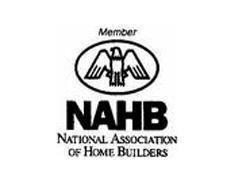Boomers Opting for Less Opulence in New Homes
Washington, DC, Oct. 5, 2009--Homebuyers age 55 and over are seeking homes approximately the same size as their present home and, unlike six years ago, they no longer prefer to pay cash, according to a survey by the National Association of Home Builders and MetLife Mature Market Institute, a research subsidiary of MetLife Inc.
In 2002, 60 percent of builders reported that buyers paid cash, while only 23 percent of builders in 2008 described their customers as cash buyers.
Fixed-rate loans dominate a new 55-plus buying market study with adjustable-rate mortgages running neck-and-neck in popularity with reverse mortgages.
Nearly half of the 55-plus respondents (41 percent) prefer a 30-year, fixed-rate loan when purchasing a new home, followed by a 15-year, fixed-rate loan (38 percent.). A small number (5 percent) preferred a reverse mortgage, some type of adjustable rate loan (5 percent), or an interest-only loan (3 percent).
Nearly half of builders (46 percent) reported that 55-plus homebuyers are buying homes in their communities that are about the same value as their previous home, 31 percent reported buyers are buying homes that are less than the value of their previous home, and 23 percent of builders reported that buyers are buying homes that are more than the value of their previous home.
“The McMansion Revolution is over,” said Steven Bomberger, a member of NAHB’s 55-Plus Housing Council. “There’s not as much spending on glamour glitz. Gone are the heavy marble, big Jacuzzi tubs and built-in wall ovens.”
In each of the past six NAHB 55-plus surveys, the size of the home requested by 55-plus buyers continued to be about the size of their previous home. Depending upon where these buyers were from, they wanted homes between 1,600 square feet and 2,400 square feet. This year’s data showed the most popular size at 1,900 square feet — and 79 percent wanted that space on one floor, up from 17 percent in 1970.
“The demand for a single-story home increases as the age of the respondent increases,” said David Crowe, NAHB’s chief economist.
